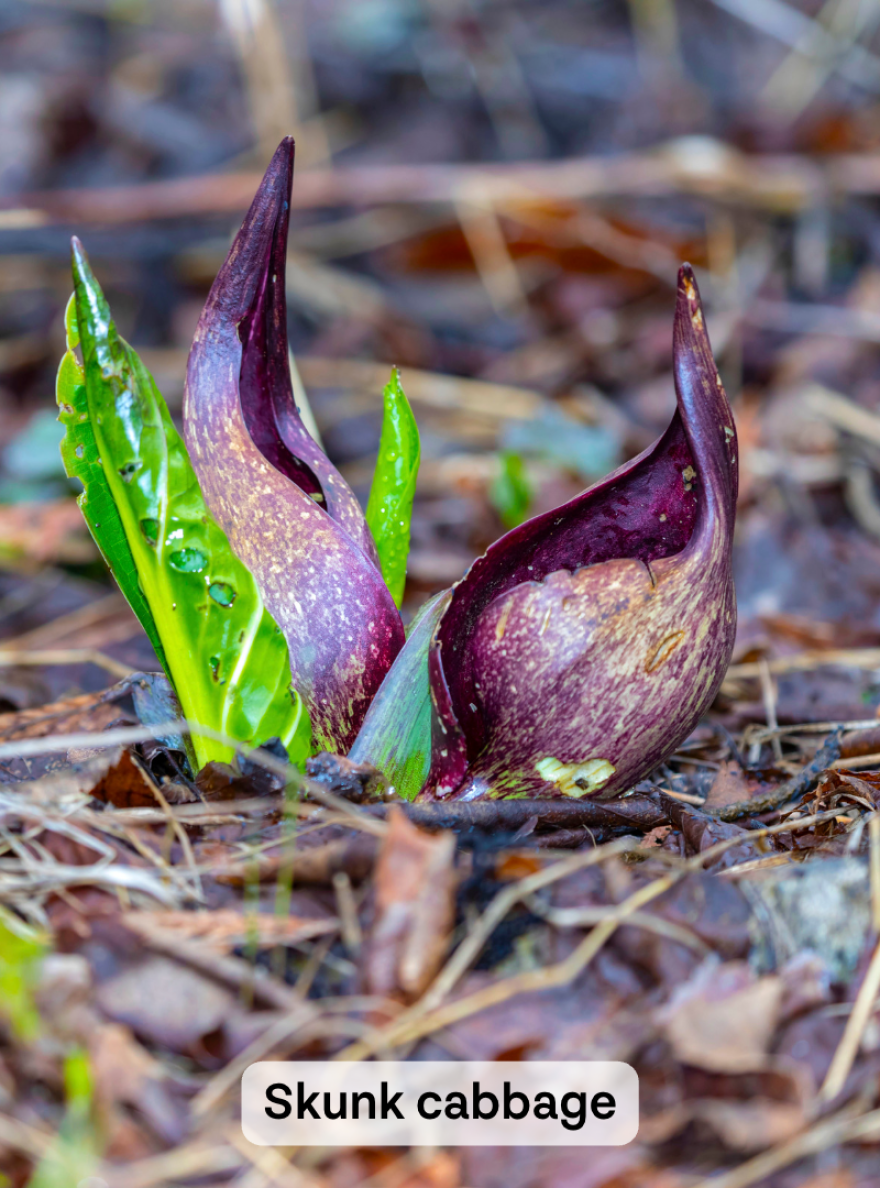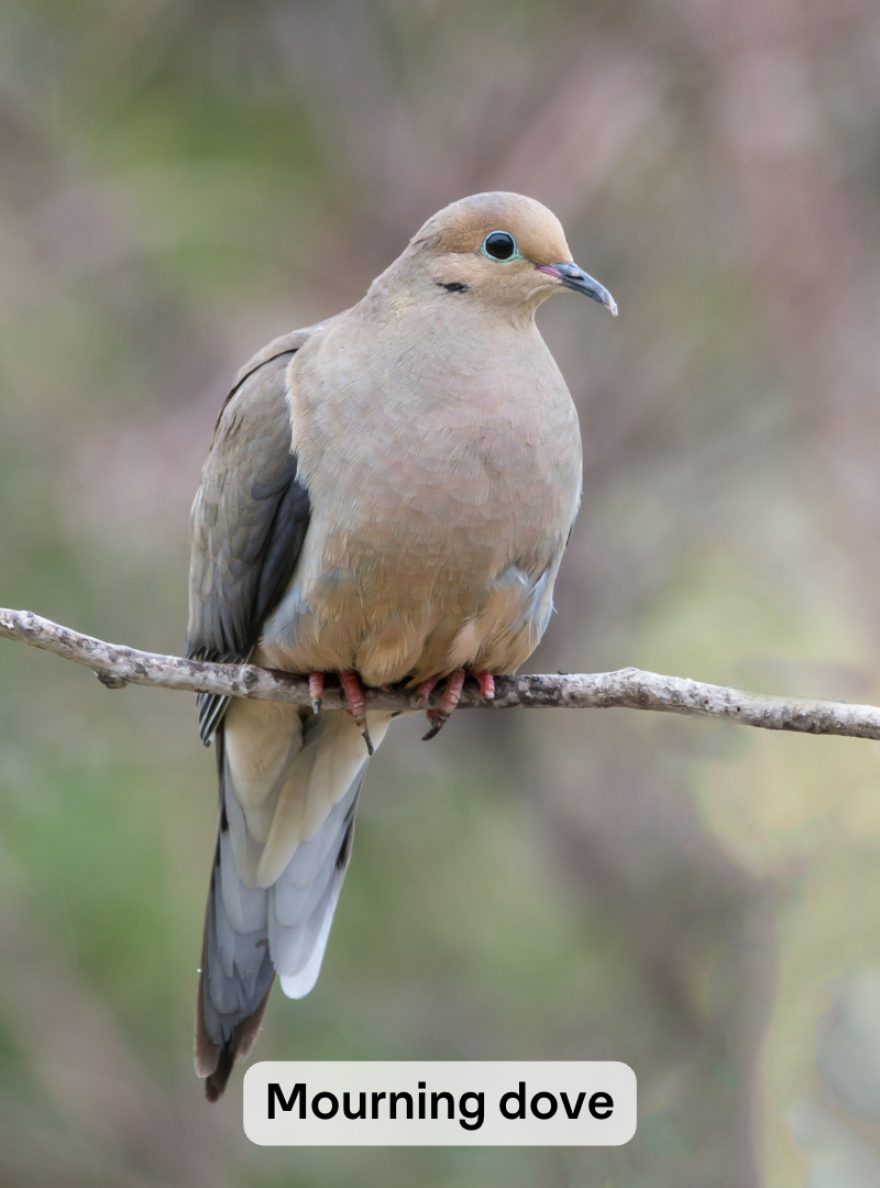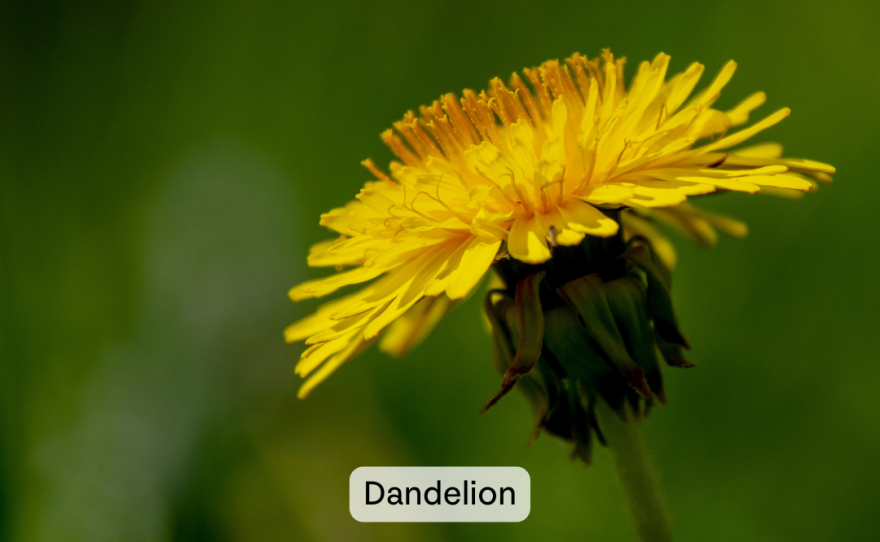Mid-spring migrants like orioles have arrived in southern Minnesota, and early spring has made it all the way to the northern edge of the state — they're hearing frogs call!
We have eight glorious reports for you. Enjoy.
Remember you can add your voice to this list! Get in touch with me (smitchell@kaxe.org), John Latimer (jlatimer@kaxe.org) or text "phenology" to 218-326-1234.
For more phenology, subscribe to our Season Watch Newsletter or visit the Season Watch Facebook page.
Prairie Creek Community School

Ravi and Malcolm reported from Michelle Martin’s class at Prairie Creek Community School.
Ravi: “Hi, this is Ravi … ”
Malcolm: “ … and this is Malcolm … ”
Ravi: “ ... and we’re from Prairie Creek Community School … ”
Malcolm: “... way down south in Northfield, Minnesota.”
Ravi: “Happy May Day, Malcolm!”
Malcolm: “Thanks, Ravi. We’re finally getting some spring-like weather.”
Ravi: “This last week was definitely slow for the plants.”
Malcolm: “We do have leaf out on the willow and the maples.”
Ravi: “The fly honeysuckle is blooming … ”
Malcom: “ ... but everything else is taking its time.”
Ravi: “The birds have been busy, though.”
Malcolm: “Kaia saw two male cardinals fighting … ”
Ravi: “... and we also saw robins 'fighting,’ aka mating.”
Malcolm: “There is a robin nesting in our solar panel.”
Ravi: “There were Red-winged Blackbirds, Blue Jays, nuthatches, geese and cow birds.”
Malcolm: “Ruby saw a male turkey walking across the road.”
Ravi: “Michelle saw a White-crowned Sparrow and a big flock of pelicans.”
Malcolm: “And Viggo saw a Northern Shoveler and our first oriole!”
Ravi: “There are a lot of spring peepers.”
Malcolm: “And a LOT of deer.”
Ravi: “This has been Prairie Creek Community School … ”
Malcolm: “... one more step along the phenology journey.”
John’s thrilled the orioles have returned to Northfield. In a typical year, they arrive to Grand Rapids between May 8-12. Hummingbirds arrive around the same time. John will keep an eye out — they'll be welcome arrivals when the time comes!
Shakopee West Middle School

Tessa, McCoy, Max, Lauren and Noah reported from Tara Orstad’s class at Shakopee West Middle School.
“Hey guys! This is Tessa, McCoy, Max, Lauren and Noah from Mrs. Orstad’s seventh grade life science class. We are reporting from the Shakopee West Middle School Life Lab Garden for the week of April 24.
“Here are our new phenology observations for this week:
- It is the time of year that the farm babies are starting to be born.
- The Minnesota River has climbed up the banks around our Huber Park! Over the weekend, Tessa saw that the river was only 15 feet away from the gazebo in the park, and later this week, Mrs. Orstad saw that it was lapping the edge of the gazebo!
- It is still too cold out for turtles to come out, so we haven’t spotted any turtles yet.
- Students did various things celebrating Earth Day on Saturday, for instance, Alex picked up trash.
- Skunk cabbage has been spotted by Mrs. Orstad near a stream bed in the Eloise Butler Wildflower Garden, last Friday, April 21. Skunk cabbage grows near streams and lakes, and is thermogenic, meaning, it gives off heat to the area around it.
- In the past week many students have seen eggs and nests of birds getting ready for spring! Lottie (Charlotte) saw some in her in vents, Ash saw them under his desk, and Eli and Zach saw some out in the open.
- Jayleen and Mollie have seen some Common Grackles. They also reported that they almost attacked them.
- Bradon W. and quite a few others have seen tulips and other spring flowers popping up. We've noticed them more and more as the spring season continues.
- Lauren B saw the first dandelion on the 24th of April! A big sign that spring is on its way. Several other students can now confirm that dandelions are out as well.
“This has been our phenology report. Work hard and keep exploring!*”
(*Microsoft Word has an automatic transcription service we refer to while writing web stories — it transcribed the tagline as, “Work hard, keep it boring.” C’mon, AI, have a sense of adventure!)
Their teacher, Mrs. Orstad, wrote us this additional note:
“The kids are on a roll! After a couple radio shows they are completely writing the whole thing themselves in class. They collect observations all week, start to write the script on Thursday, and finally edit and record on Fridays. All the students help even though only a few volunteer or put their name in the hat for reading for the recording.”
John’s thrilled with the report and that the students are all chipping in to write and record it! That is a wonderful summary of our hopes for the program — not just to get students outside and enjoying nature, but also engaging them in all the other disciplines that go into sharing observations.
Phenology ties in writing skills and public speaking skills. There’s math, art, even a bit of music — the list is endless! I like to joke that we’re like a beneficial mold: once we establish a colony in a corner of the curriculum, we slowly spread through everything.
Baxter Elementary

Greta and Emily reported from Nick Macejkovic’s class at Baxter Elementary School. The ice finally melted from the lakes on April 28 and 29. Maple trees broke bud, and the aspen leaves are dropping their catkins.
Spring peepers began to call on April 25, and there are a lot of female Red-winged Blackbirds in the area. One student saw a cackling goose!
"Mr. Latimer, should we start looking for baby loons?” the students ask. “Have a great week and be observant!”
In answer to the students’ question, John says he would not yet be looking for baby loons. They will hatch in June. Right now, their parents are searching for a good spot for a nest. Once the nest is constructed and the eggs are laid, the eggs incubate for 30 days before hatching, so it’ll be a bit before we see loonlets!
John enthusiastically cites the students’ observation of male aspen catkins falling and the flowers on the red maple opening. In Grand Rapids, the male aspen catkins have just begun to drop.
Long Lake Conservation Center
Tristan and Elise reported from Sand Creek Elementary’s trip to Long Lake Conservation Center:
“During our trip to Long Lake Conservation Center April 26 through the 28, signs of spring were everywhere, including the return of a loon to Long Lake. It was fun to hear the song again.
“Buds have broken on red maple trees and Natalie saw new growth on tamaracks in the bog. Taylor and Oliva saw lots of deer poop, which our group calls Cocoa Puffs. Taylor also saw a wood tick, and what they thought was a blackberry tree on the way to the bog, but it was actually a buckthorn. Jonah, Max, Austyn and others saw whitetail deer. The one that Austyn saw was a big one. Carson saw three spiders, rabbits, and a rafter of turkeys were observed in the orienteering field.
“Many people in our group encountered garter snakes in the woods. Henry was bitten by one! The Long Lake naturalists told us that garter snakes will bite to defend themselves but are harmless. Henry is doing fine.
“Our group saw a green stink bug, and in the woods, we found lots of jelly mushrooms. Dill Prickles made a brief appearance. He walked right through campus so many of us could see him. Other sightings included Hairy Woodpeckers, chickadees, nuthatches, robins and Derek saw Hooded Mergansers on the lake. We also heard western chorus frogs and spring peepers.
“The ice is going out quickly. When we arrived, there was only about 15 feet of open water around the shore. Today, there are 50 feet or more in some spots. It won’t be long. We had a great time in nature and we want to remind everyone to … Unplug, get outside, and LIVE CONNECTED!”
Unfortunately, John has also found wood ticks. He’s pulled a few off himself and his dog, so he reminds us to pull our socks up over our pants and check yourself carefully when you get in from the woods.
John has not yet heard the chorus frogs or spring peepers, but he’s looking forward to hearing them when they begin singing in his area.
Nadia and Bristol reported from Central Elementary School’s trip to Long Lake Conservation Center:
“During our trip to Long Lake Conservation Center April 24 through the 26, we were lucky to have some first-of-the-year sightings.
“One of the most notable was the first otter sighting of the year. There have been signs of otter activity, but this was the first time they’ve been seen since October 19. Unfortunately, we had a confirmed sighting of a wood tick. Yuck! The last reported tick at Long Lake was November 15.
“One of the highlights of our trip was during our night hike, when we heard a wolf howl. It was really cool, but a little scary. We also heard a barred owl hooting.
“In the forest, the leaves of wild strawberry are coming up. Dill Prickles was spotted last night in a Norway Pine. Our group observed an army of ants in the hollow of a rotten tree, and a worm in the ground. Other observations were goldfinches, Hairy Woodpeckers, Mallards, chickadees, nuthatches, Blue Jays, robins, mergansers, slugs, canine tracks (possibly wolf), deer, squirrels, turkey tracks and garter snakes. The garter snakes are no longer hanging out near the hibernacula.
“We also heard the song of the spring peepers. Very pretty. We had a great time in nature and we want to remind everyone to ... Unplug, get outside, and LIVE CONNECTED!”
The ticks disappearing after Thanksgiving is a great holiday present, John points out. They are back, though, so be aware.
Active ants are a more welcome development in the insect world — they start moving around once the soil warms up, so that’s a sure sign that spring has a solid foothold in the region.
North Shore Community School

Addison reported from Darcie Rolfe and Leigh Jackson’s class at the North Shore Community School in Duluth.
“Hello from North Shore Community School on the north shore of Lake Superior. This is the Phenology Report for the week of April 22, 2023. My name is Addison, and I’m your phenologist for this week!
“On Saturday, April 22, there was 13 hours and 50 minutes of daylight. On Sunday, April 23, a few lucky people were able to see a bit of the Northern Lights in our area. There are still some mounds of snow on our school playground and in our school forest. Other areas around our school are very wet and muddy.
“The barberry shrub in Rio's yard has started to bloom. Common barberry is a deciduous shrub in the barberry family, measuring 8-10 feet in height and 6 feet in width. The small, ovate, alternate, toothed leaves are clustered at nodes, flowers are 1/2-inch long, pale yellow and hang from branches at leaf clusters. Laura has been seeing a lot more green grass lately, and she has also seen a lot of trees that have buds around her house and at school.
“During the past few days near our school compost bins, Zane has noticed many bird tracks. Another day, he saw around 20 birds fly away when he got there. They might have been juncos. On Sunday April 23, Rio had three birds hit their window! Putting up window clings or other decorations is helpful to have on your windows near bird feeders, so birds see them and avoid them. Many songbirds have also been sighted along roadways. Please slow down when you see them!
“On Wednesday, April 26, Ms. Lampela’s class saw a robin carrying grass in its beak. Then they watched the robin fly to a partially constructed nest. Robins make medium-sized, cup-shaped nests out of grass, twigs and mud. While Laila and Rio were collecting sap in the NSCS forest they saw and heard many different species of birds including chickadees, Red-winged Blackbirds, Pileated Woodpeckers and robins. Elijah and his family saw several Bald Eagles by the road, eating a deer carcass, and one flew over their car.
“On April 27, when Mrs. Rolfe was on her morning walk after the rain, she saw a lot of earthworms out on her dirt road. This is the first time she has seen any worms this year. When Mrs. Rolfe’s class was out for EE, by shelter 2, they were clearing brush when they saw the first frog coming out of hibernation. On April 28, Rio and Laila collected maple sap and found that our tree produced 1 quart of sap in two days. On Sunday, April 23, Laura and her friends were in Two Harbors on the breakwall and they saw three or more loons, and saw one eat a fish. The loons have returned!
“Today, Friday, April 28, is Arbor Day! The origin of Arbor Day began in the 1870s in Nebraska. It became officially recognized nationally starting in 1970 and yearly after that. This day is celebrated across the United States by planting and caring for trees to preserve our natural resources in a sustainable way. Trees provide building materials and food, shelter and protection, habitats for wildlife, and help clean our air. Plant a tree today!
“This concludes the phenology report. Have a great week and be observant!”
John’s also noted the greening grass and appearance of earthworms. He guesses the frog the students found in the woods was a wood frog: they overwinter in the leaf litter. He adds, however, that there are a number of frog species that overwinter the same way. It's hard to know for sure without a picture.
As the students noticed, the loons first arrive at open water along the shore and river. As lakes open up, they’ll move inland to their nesting territories.
Waubun School Forest

Reed, Melanie, Macey and Jamoson reported from Courtney Farwell and Nick Lenzen’s class at the Waubun School Forest.
“Boozhoo Gidinawemaaganinaag, hello all my relatives. Our names are Reed, Melanie, Macey and Jamoson and we are from the Waubun School Forest.
“One student saw a black bear and two cubs. We have been seeing garter snakes, slugs and worms. The snakes were going onto the water. We think there is about 5% of snow left in the woods out at the school forest. We noticed that the tar is dry and there is no snow, while on the ground it is not dry and there is just a little snow left.
“We have also been seeing more birds, a student saw a hummingbird and multiple students have seen turkeys. One student saw a turkey vulture. We have heard grouse drumming. Our teacher even saw a butterfly.
“We think all week it has been pretty windy. The average wind speed was 7 mph. It doesn't seem like a lot, but two days were like 17 mph.
“Another one of our teachers saw wild strawberries. He didn't see the actual strawberries, but he did see the plant. We think he will see the strawberries this summer.
“Last year we got only 75 gallons of sap, but this year we have two more grades of students, so at the moment, we have about 255 gallons of sap.
“Thank you for listening to our Waubun Phenology. Living the nature life!”
Like the students, John saw his first Turkey Vulture this week. The Ruffed Grouse drumming was another first of the year.
When the snow melts, it reveals a number of green plants. Strawberries are one of them! They are evergreen, keeping their color through the winter (though they do send up additional leaves in spring).
John was grateful to hear the class has gotten a good amount of maple sap: “They’ll have plenty of syrup for their nature live over there in Waubun.”
Lake of the Woods School in Baudette

Breckon reported from Andrew Pierson’s class at Lake of the Woods School in Baudette.
“This is Breckon with the phenomenal* report from Baudette for April 18-26th. We finished up our maple sap collection project last week as the maple trees are beginning to bud. We ended with a total of 6,450 ml or 1.7 gallons of sap.
“It appears that our hopeful pair of magpies have chosen a nesting site someplace other than our maple tree. We haven’t seen them in two weeks now.
“This week’s warmer weather has invited a variety of new visitors to our area including Sandhill Cranes, Red-winged Blackbirds, Mourning Doves, American Kestrels, and the lovely calls of chorus and wood frogs.”
*I assume this is a typo, but I’m leaving it.
John’s happy to hear the students are watching for many of the same events he is! With their input, he knows the Sandhill Cranes are back in Grand Rapids and Baudette, as well as American Kestrels.
He wasn’t surprised to hear the magpies had moved to a different location to build their nest. Magpies build very large stick nests, up to 2 feet long and a foot high. Keep an eye out for them, if you’re in the magpie’s range.
As always, we hope to hear from you, dear reader. Let us know what you find out there.
Funding for this project was provided by the Minnesota Environment and Natural Resources Trust Fund as recommended by the Legislative-Citizen Commission on Minnesota Resources (LCCMR).






